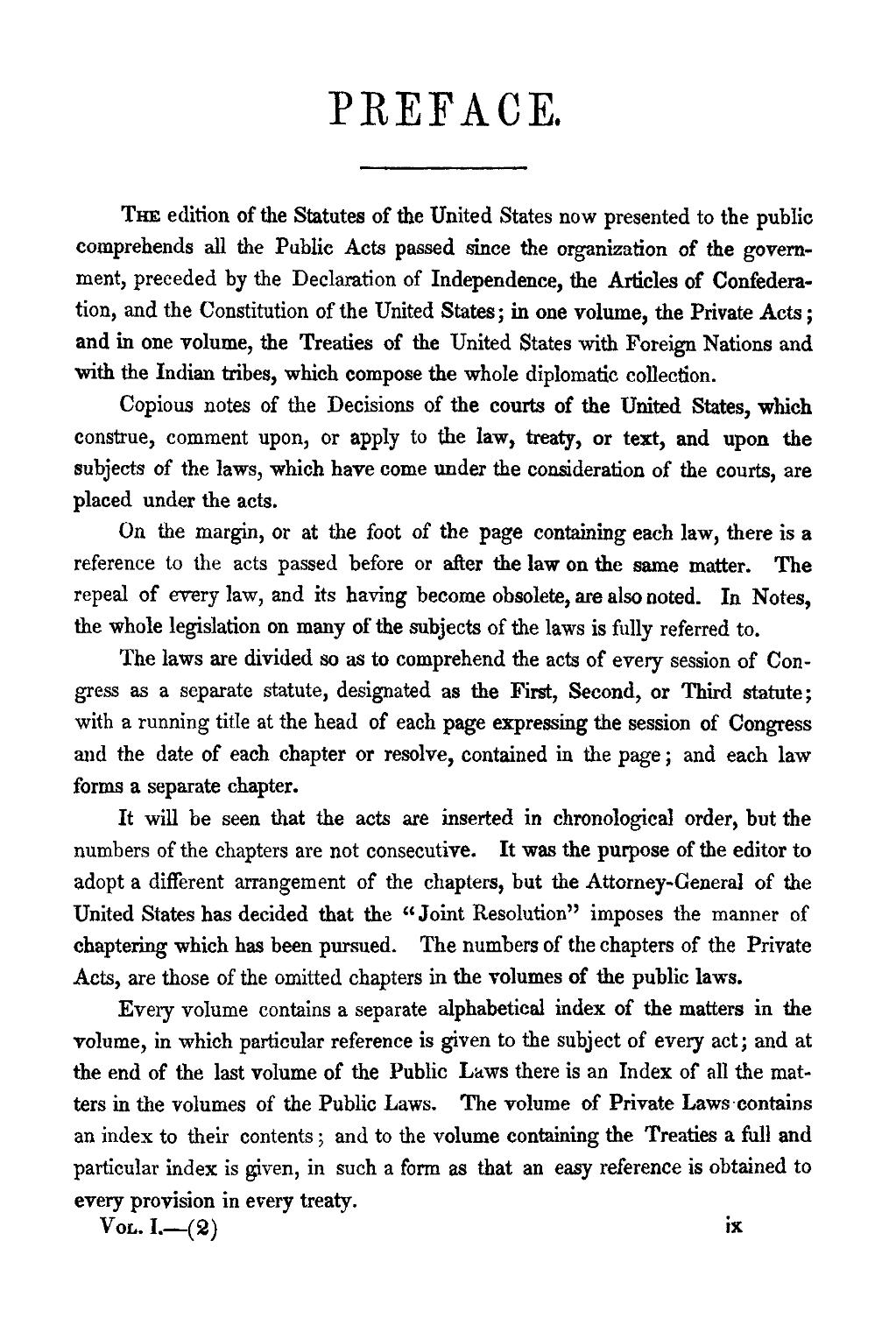PREFACE.
The edition of the Statutes of the United States now presented to the public comprehends all the Public Acts passed since the organization of the government, preceded by the Declaration of Independence, the Articles of Confederation, and the Constitution of the United States; in one volume, the Private Acts; and in one volume, the Treaties of the United States with Foreign Nations and with the Indian tribes, which compose the whole diplomatic collection.
Copious notes of the Decisions of the courts of the United States, which construe, comment upon, or apply to the law, treaty, or text, and upon the subjects of the laws, which have come under the consideration of the courts, are placed under the acts.
On the margin, or at the foot of the page containing each law, there is a reference to the acts passed before or after the law on the same matter. The repeal of every law, and its having become obsolete, are also noted. In Notes, the whole legislation on many of the subjects of the laws is fully referred to.
The laws are divided so as to comprehend the acts of every session of Congress as a separate statute, designated as the First, Second, or Third statute; with a running title at the head of each page expressing the session of Congress and the date of each chapter or resolve, contained in the page; and each law forms a separate chapter.
It will be seen that the acts are inserted in chronological order, but the numbers of the chapters are not consecutive. It was the purpose of the editor to adopt a different arrangement of the chapters, but the Attorney-General of the United States has decided that the "Joint Resolution" imposes the manner of chaptering which has been pursued. The numbers of the chapters of the Private Acts, are those of the omitted chapters in the volumes of the public laws.
Every volume contains a separate alphabetical index of the matters in the volume, in which particular reference is given to the subject of every act; and at the end of the last volume of the Public Laws there is an Index of all the matters in the volumes of the Public Laws. The volume of Private Laws contains an index to their contents; and to the volume containing the Treaties a full and particular index is given, in such a form as that an easy reference is obtained to every provision in every treaty.
